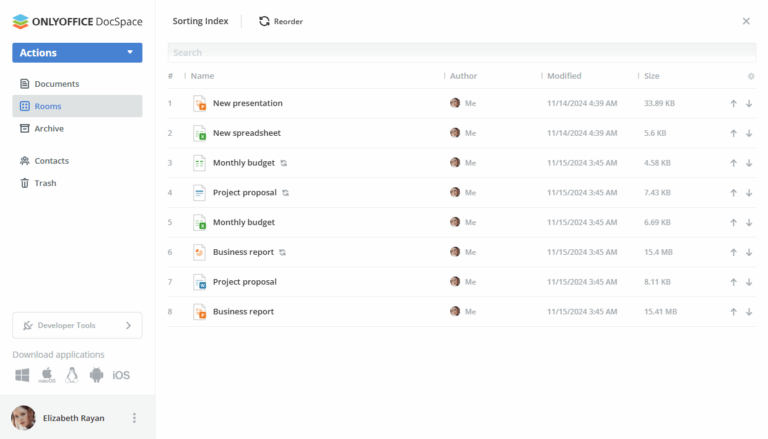In this modern digitally dominated world, marketplaces are always trying to get the attention of customers by coming up with new solutions. One of the ways through which consumers can be engaged is using digital catalogs in mobile applications. This transformation of the shopping experience does not just make it modern. It also allows users to interact and engage in a self-directed way. With mobile devices leading in retail shopping, those engaging in modern marketing using digital catalogs will not only draw the attention of customers, but will do so in a very effective manner.
The Shift from Print to Digital
Contents
- 1 The Shift from Print to Digital
- 2 Creating an Interactive Shopping Experience
- 3 Seamless Navigation and Personalization
- 4 Real-Time Updates and Smart Inventory Management
- 5 Driving Sales with a Direct Purchase Path
- 6 Making Digital Catalogs More Engaging
- 7 The Role of AI and Machine Learning in Digital Catalogs
- 8 The Future of Digital Catalogs in Mobile Commerce
- 9 nandbox App Builder
For many years, printed catalogs have been an important part of retail advertising, providing a chance for customers to look through offered products in a less constrained manner. With advancement in technology, and shifts in consumer behavior, it is evident that digital catalogs are now the better option. The same way digital catalog is superior to their print, using digital catalogs are unlike print catalogs in that they automagically work. A business can change content, embed features, and make personalized suggestions based on what the catalog users do.
In an era defined by ever-changing consumer needs, integrating and using digital catalogs in mobile applications allows businesses to transition from brick and mortar shopping to a more modern approach. As a result, the shopping experience becomes richer and more seamless as customers navigate from one page to another with ease – all in the same app. For consumers who are always on the go, there is appreciation for the ability to skim through product catalogs on mobile devices as opposed to waiting for websites to load or magazines to be printed. With real-time changes, consumers are always kept up to date with the most current fashion trends, stock levels, and promotional offers.
Creating an Interactive Shopping Experience

An excellent example of bringing interactivity to mobile applications is the embedded feature of digital catalogs. Rather than passively watching pages turn, users can actively participate in the experience through high resolution images, zoomed images, 360 degree views of products and videos. This gives the user the ability, and freedom, to view an item in detail and purchase it without stepping inside a store and trying it on.
In addition, companies can add augmented reality (AR) options letting customers visualize products in their homes prior to purchasing them. Integration of AR features helps during the buying process, such as virtually trying on sunglasses or pre-purchasing furniture for a customer’s living room. This captivates their confidence as customers make more informed choices. The likelihood of interactive experiences is the reasoning to spend time looking at products as well as making purchases.
Digital catalogs also improve mobility in addition to mobile apps, which have become very popular because of their ease of use. With intelligent navigation features, it becomes possible for users to look for particular items within the catalog. It’s also possible to receive filtered search results and even personalized suggestions. AI algorithms analyze the user’s activities to offer suggestions, making the shopping experience unique and appealing to each customer.
This implies greater engagement from users, which results in better sales for the companies. People will be more willing to spend money if they know that an app that caters to their shopping needs. Enhancing user loyalty and brand credibility is possible through offering additional functions that allow customers to save favorite items, create wish lists, and receive informative personalized notifications about payments.
Real-Time Updates and Smart Inventory Management

Unlike printed catalogs that are out of date the moment they are released, mobile apps equipped catalogs allow users to refresh the content to their heart’s content. Consequently, users can access the latest product offerings, promotions, and stock levels. Customers can also instantly know if a new collection is being launched or if a popular product has been restocked.
On the other hand, from a business perspective, this can be considered smarter inventory control. Businesses can monitor user activity, analyze demand, and modify stock levels. This reduces the likelihood of overproduction or out-of-stock situations which optimizes overall efficiency and satisfaction. Additionally, retailers are able to see engagement stats on specific products. That allows them to adjust marketing strategies and set promotions for the most needed time.
Driving Sales with a Direct Purchase Path
An important feature of mobile-app-friendly digital catalogs is the ability to promote straightforward and quick purchases. Unlike simple product advertisement, these serve as sales channels, allowing users to conveniently add and purchase items. With one click “buy now” buttons and app-based checkout, unnecessary procedures are eliminated, increasing the likelihood of completing the purchase.
Businesses can also use push notifications and personalized marketing to persuade a customer to purchase a product. Impulsive buying behavior, along with sales, is heightened through limited-time discounts, restocking notifications, and personalized deals related to the user’s browsing history. With mobile payment options becoming more accessible and secure, purchasing through a digital catalog is more effective and easier than ever before.
Making Digital Catalogs More Engaging
To truly harness the potential of digital catalogs, businesses must make it interactive. Clickable hotspots, social sharing features, and user-generated content integrations are just a few examples of how to make digital catalogs more engaging. For instance, letting users view customer reviews and images, or letting them share their favorite products on social media improves the shopping experience.
These interactive components allow companies to collect important customer feedback. Brands can better track consumer preferences by embedding surveys, quizzes, or simple rating systems into a digital catalog. As these users feel more connected and involved, their relationship with the brand deepens.
The Role of AI and Machine Learning in Digital Catalogs
The development of digital catalogs is mainly dependent on the growth of AI and machine learning. AI-powered recommendation engines are capable of studying a user’s previous purchases. They are also capable of browsing habits, and engagement levels to create an ideal shopping experience. Users no longer have to aimlessly scroll through endless irrelevant products. Instead, they receive personalized suggestions that best fit their lifestyle.
Machine learning gives the ability to estimate shopping behaviors and other customer preferences. This feature allows brands to modify their digital catalogs on the fly. Automated content updates, predictive pricing, and dynamic placement of products guarantee that users see compelling offers.
The Future of Digital Catalogs in Mobile Commerce

Integrating and using digital catalogs into mobile apps will be an effective strategy as mobile commerce continues to dominate the industry. Most consumers have a low tolerance for inconvenience. they expect a higher degree of customization and interaction. Which all can be offered by digital catalogs.
Using the latest technology allows businesses to improve customer interaction, increase revenue. Also maintain a shopping experience that brings clients back. For brands willing to adapt, the future of digital catalogs is promising and provides countless benefits. With the development of AI, AR, and mobile-centered approaches, businesses focusing on and using digital catalogs will not only improve customer satisfaction but also change the future of shopping for good.
nandbox App Builder
By enabling the seamless integration of digital catalogs into their mobile applications, the nandbox App Builder enables businesses to transform the purchasing experience for their users. With nandbox’s no-code platform, companies can build apps with all the bells and whistles. Example: interactive catalogs with personalized AI experiences, live updates, and augmented reality features.





